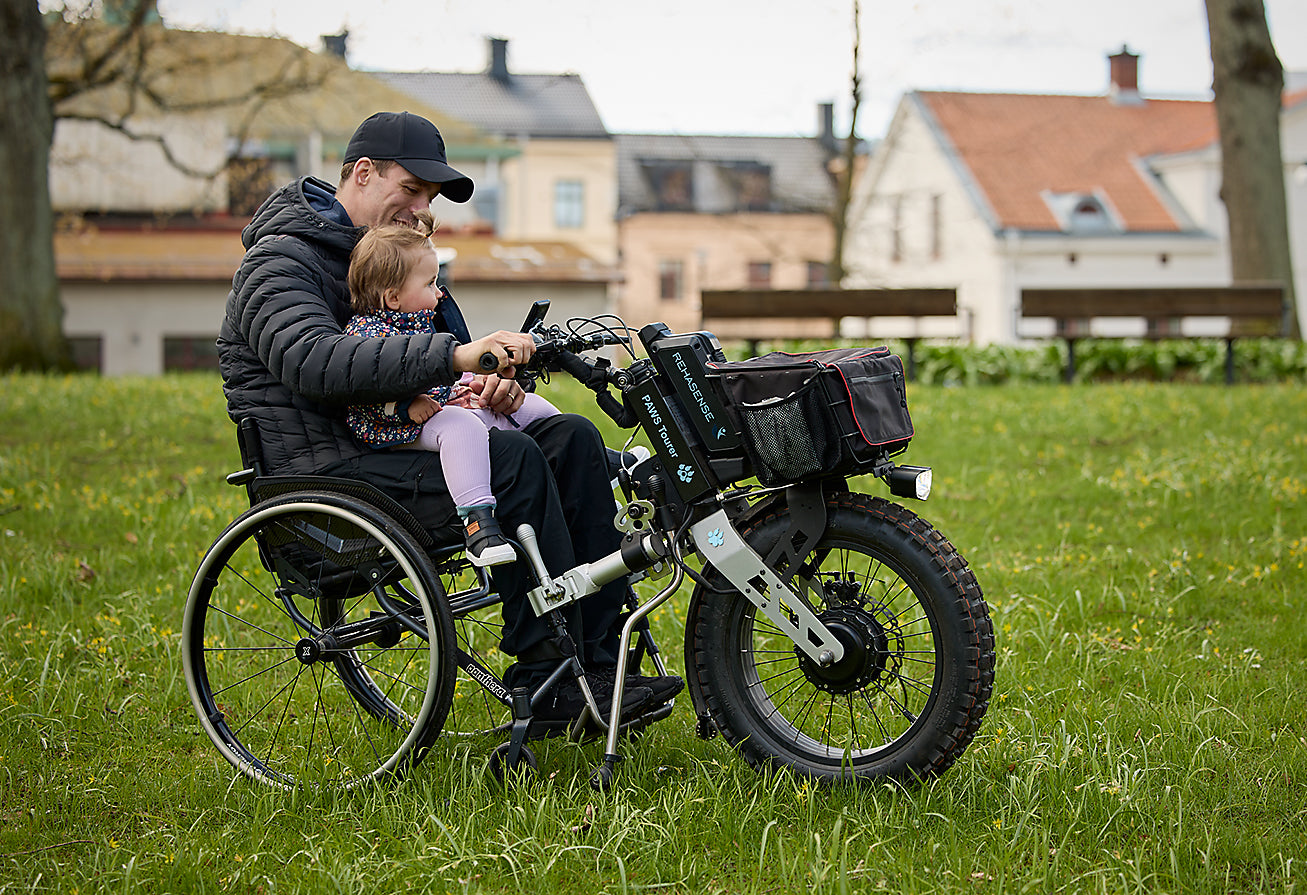At Allied Medical, we're passionate about helping Kiwis live more independently and comfortably with the right mobility solutions. If you're using a manual wheelchair or supporting someone who does, you may have come across terms like "power assist", "power add-on" and "powerchair". These are all valuable tools in the world of mobility, but they serve different purposes depending on individual needs, environments, and goals.
Power assist, power add-on and powerchairs all utilise battery and motor-based technology to help people achieve maximum independence in their environments. All options help individuals to conserve their own energy over the day so they can remain independent for longer.
This blog will help you understand the key differences, when each is most useful, and how our PAWS (Power Assisted Wheelchair Systems) range can play a part in your mobility journey.
What is a Power Assist System?
Power Assist systems are designed to reduce the physical effort required to self-propel a manual wheelchair. These systems usually integrate directly into the wheelchair's wheels or frame, amplifying the user’s push and making it easier to travel longer distances or tackle slopes and uneven terrain.
When to use a power assist:
- You want to continue self-propelling but need a boost for hills, longer outings or tricky terrain
- You're experiencing fatigue, shoulder pain or decreased endurance
- You need to reduce the physical strain of daily propulsion while maintaining mobility independence
Power assist systems help reduce the frequency, force, and range of movement required in each push. Research shows they significantly lower peak forces and shoulder joint strain, reducing the risk of overuse injuries. They also maintain full manual control, which is ideal for many active users.
What is a Power Add-On?
A power add-on is an external device that attaches to a manual wheelchair to add powered mobility. These are more diverse in form and function than power assists and include push or pull attachments controlled by the user or a caregiver. Some clamp onto the frame, others replace the rear wheels.
Types include:
- Push devices – Mounted at the rear, pushing the chair forward. Great for longer distances.
- Pull devices (e.g., front bikes) – Like our PAWS range, these attach to the front of the chair, adding motorised speed and improved terrain handling.
- Wheel replacements – Powered rear wheels that the user propels, with motorised support.
- Caregiver-assist systems – Ideal for those unable to propel themselves, giving caregivers easier control over pushing.
When to use a power add-on:
- You need powered support but still use your manual chair daily
- You require occasional help with longer distances or difficult environments
- Transport or home access makes a full powerchair unsuitable
These solutions allow flexibility and can be a bridge between manual and powered mobility.
When to Consider a Powerchair
A powerchair is purpose-built for full-time powered mobility use. Powerchairs feature robust frames, larger wheels, programmable controls, and often include power seating options like tilt or recline.
Best suited for:
- People who can no longer self-propel safely or effectively
- Those needing long-term or full-day powered mobility
- Users who benefit from advanced postural support and seating functions
Things to keep in mind:
- Powerchairs are bulkier and may limit spontaneity or access in tight environments
- Transport can require accessible vans or taxis
- They're ideal for consistent use and environments where support and endurance are crucial
Where PAWS Fits In
Our PAWS (Power Assisted Wheelchair System) range includes front-mounted power assist bikes that transform your manual wheelchair into an all-terrain powerhouse. They're perfect for outdoor-loving Kiwis who want independence with ease and speed.

PAWS offers:
- High performance on uneven ground, gravel, and hills
- Easy handlebar controls with various drive modes
- Models designed for different levels of hand and arm function
They’re also travel-friendly, simple to attach and remove, and compatible with a wide range of wheelchair frames. Whether you're navigating city streets or forest trails, PAWS offers the freedom to explore more.
PAWS City
PAWS Cruiser
PAWS Tourer
Which One is Right for You?
Choosing between a manual wheelchair with a power assist, a power add-on, or a powerchair depends on:
- Your physical capabilities (e.g. upper limb strength, endurance)
- Your lifestyle and daily travel needs
- Your environment (indoor vs outdoor use, distance, terrain)
- Transport and storage options
- Whether you use a caregiver for mobility support
If you’re unsure, our team is here to help. We work closely with clients, therapists and whānau to find the best-fit mobility solution that suits your needs now and into the future.


